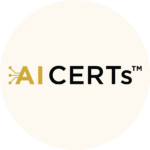
AI CERTS
5 months ago
AI in the Workplace: How AI Co-Pilots Are Changing Jobs
According to the latest AI trends, the focus isn’t on replacing people. Instead, AI co-pilots are emerging as powerful partners, helping teams work smarter, faster, and with greater accuracy. This is more than just another tech upgrade—it’s a game-changing shift that’s impacting industries from finance to healthcare.

The Rise of AI Co-Pilots in Workplaces
AI co-pilots are advanced assistants built on large language models (LLMs) designed to amplify human performance. Their job isn’t to replace workers but to free them from repetitive and time-consuming tasks, making AI in the workplace more efficient.
Common uses of AI co-pilots include:
- Drafting reports or presentations in seconds
- Summarizing lengthy documents for quick review
- Providing real-time data insights for decisions
- Automating repetitive administrative processes
Why it matters:
When routine work is automated, employees can focus on strategy, innovation, and building client relationships. This shift means greater efficiency without sacrificing creativity.
Future of Jobs with AI – Threat or Opportunity?
A common question in the latest AI news is: Will AI replace jobs? The truth is more nuanced. AI in the workplace will transform roles far more than it will eliminate them.
What’s changing:
- Low-skill, repetitive roles are more likely to be automated
- Creative, strategic, and problem-solving roles will thrive with AI support
Emerging AI trends in job evolution:
- AI handles data-heavy, repetitive work
- Humans lead tasks involving empathy, creativity, and strategic thinking
- New career paths—such as AI trainers, prompt engineers, and AI ethicists—are emerging
Pro Tip: Just as personal computers created new industries, AI will unlock opportunities we can’t yet imagine.
AI Collaboration Tools Boost Team Productivity
From on-device AI to cloud-based assistants, AI collaboration tools are transforming how teams work together, proving the growing value of AI in the workplace.
Benefits include:
- Faster brainstorming with AI-powered idea generation
- Real-time translation to improve global communication
- Automated meeting notes and task assignments
- Instant visualizations for complex data reports
Example: Imagine a marketing team brainstorming a campaign. The AI co-pilot suggests slogans, generates visuals, and organizes the task list—all in minutes.
Pro Tip: Early adoption of AI collaboration tools gives companies a competitive advantage in speed, innovation, and decision-making.
On-Device AI – The Next Big Shift
While cloud-based AI dominates now, on-device AI is gaining momentum for its speed, privacy, and personalization, further advancing AI in the workplace.
Advantages of on-device AI:
- Enhanced privacy – Your data stays local to your device
- Faster processing – No internet delays
- Custom workflows – AI adapts to your specific needs
Example: AI Copilot PCs can summarize documents, plan schedules, and recommend next actions—all without sending data to the cloud.
Why it matters: On-device AI makes artificial intelligence more accessible, even in low-connectivity environments. This is crucial for industries like healthcare and defense, where privacy is critical.
Preparing for an AI-Driven Future
Thriving with AI in the workplace requires both technical and soft skills.
Steps to prepare:
- Learn AI fundamentals – Understand capabilities and limits
- Experiment with AI tools – Apply them to daily tasks
- Stay updated on AI trends and ethics – Know what’s changing
- Develop human skills – Creativity, empathy, and leadership remain irreplaceable
Pro Tip: AI certifications can boost your career by validating your skills in AI tools, prompt engineering, and ethical AI deployment.
Real-World Industries Embracing AI Co-Pilots
AI in the workplace is not industry-specific—it’s making waves everywhere.
Examples include:
- Healthcare: AI helps doctors summarize patient histories and suggest treatments faster
- Finance: AI co-pilots generate risk reports, detect fraud patterns, and create investment summaries
- Education: Teachers use AI to create lesson plans, grade assignments, and provide personalized learning
- Customer Service: AI handles FAQs instantly, freeing agents for complex issues
Example: A legal firm uses AI to scan thousands of case files, summarize them, and prepare drafts for attorneys—cutting research time from days to hours.
Conclusion
AI in the workplace isn’t just a passing trend—it’s the next stage in how businesses collaborate and innovate. From AI co-pilots that handle repetitive tasks to on-device AI that ensures privacy and speed, the latest AI trends point toward a future where humans and machines work seamlessly together.
Those who adapt, learn, and integrate AI into their workflow will be the ones who succeed in the years ahead.
"Lead the AI workplace revolution with the AI Business™ certifications."
If you loved this, you’ll want to read Open-Source AI 2025: How Community Models Are Democratizing Innovation. Dive deeper into what’s next.



